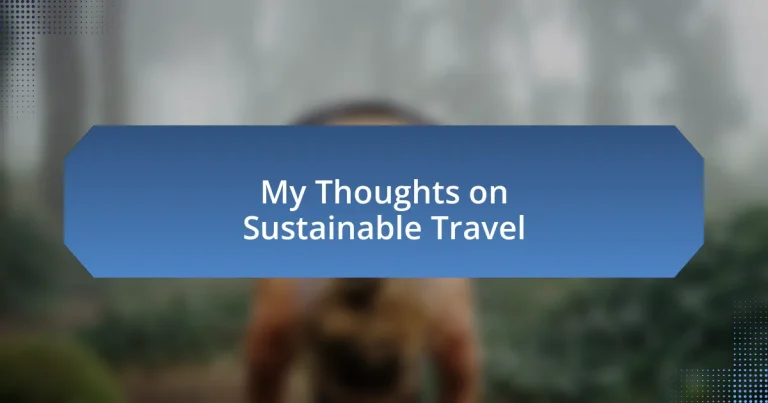Key takeaways:
- Sustainable travel fosters connections with local cultures, supports communities, and reduces environmental footprints.
- Choosing eco-friendly transportation options, like bicycles and trains, significantly minimizes carbon emissions and enhances travel experiences.
- Selecting sustainable accommodations and engaging with local economies can positively impact environmental preservation and cultural exchange.
- Responsible wildlife tourism and sharing personal travel experiences can inspire collective action towards sustainability.
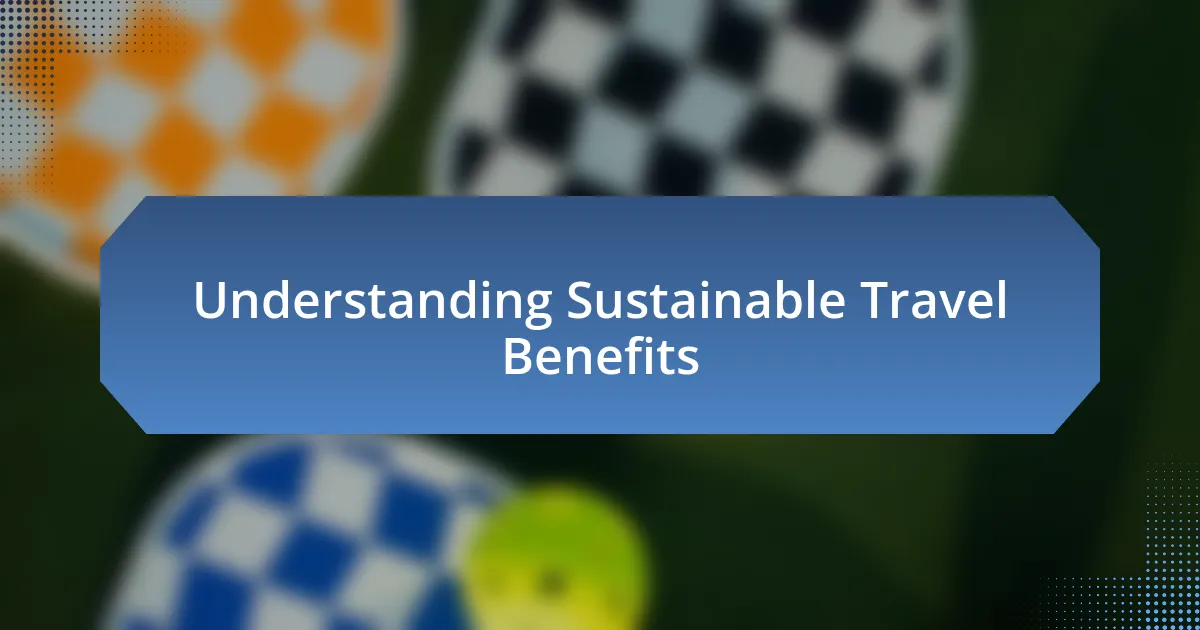
Understanding Sustainable Travel Benefits
One of the most rewarding benefits of sustainable travel is the deep connection it fosters with local cultures and communities. I remember visiting a small village in Costa Rica, where I stayed with a family who introduced me to their traditions and cooking. It was an eye-opening experience—I realized that choosing sustainable options allows us to support these communities while enriching our own understanding of the world.
Sustainable travel also significantly reduces our environmental footprint. Reflecting on my own travels, I’ve often wondered how my choices impact the planet. By opting for eco-friendly accommodations or utilizing public transportation, I not only minimize waste but also encourage local economies to prioritize sustainability. It feels empowering to make choices that align with my values while exploring new places.
Moreover, there’s a growing sense of community among like-minded travelers who prioritize sustainability. When I ventured to an eco-conscious retreat, I was surrounded by individuals who shared my passion for the environment. Sharing tips and experiences with fellow travelers sparked meaningful conversations that often inspire collective action to protect our planet. Don’t you agree that these connections remind us that travel can be a force for good?
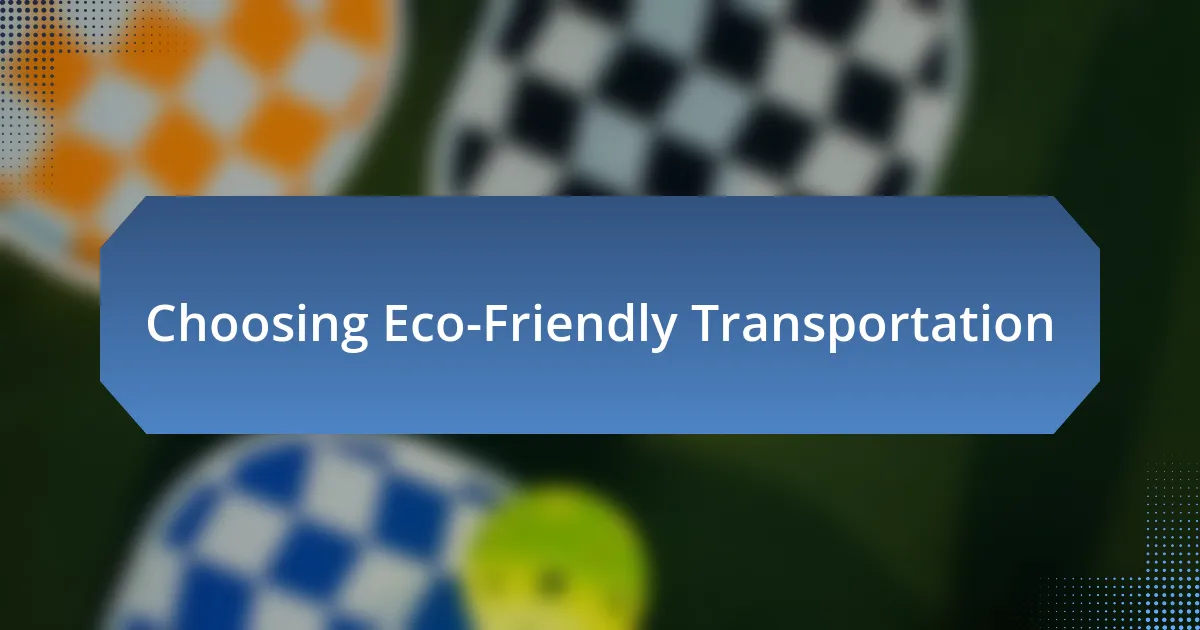
Choosing Eco-Friendly Transportation
Choosing eco-friendly transportation is crucial in minimizing our carbon footprint while traveling. I’ve found that opting for bicycles or local public transit can offer an entirely different perspective on a destination. Just last summer, I discovered a sleepy coastal town in Portugal while cycling along the shore, breathing in the salty air and chatting with locals at markets. This experience made me realize how slow travel opens up opportunities to engage with a place in ways that cars simply can’t.
When I think about my trips, I often reflect on the choices I make regarding transportation. Using trains instead of planes has become a personal rule of thumb. Not only is it more sustainable, but the scenic journeys offer a glimpse of the landscapes that often go unnoticed from above. I remember taking an overnight train through the Swiss Alps; it was a magical experience, watching the sun rise over the mountains while sipping coffee in the dining car. This kind of travel can be just as thrilling as the destination itself.
To better understand the impact of different transport modes, here’s a comparison of their environmental effects:
| Transportation Type | Carbon Emissions (g CO2/km) |
|---|---|
| Bicycle | 0 |
| Public Transit (Bus/Train) | 30-100 |
| Car (Gasoline) | 150 |
| Airplane | 250-300 |

Selecting Sustainable Accommodations
Selecting Sustainable Accommodations
Choosing sustainable accommodations is one of the most impactful decisions a traveler can make. I vividly recall my stay at a boutique eco-lodge in Costa Rica, where everything from the bamboo structures to the solar-powered facilities reflected a commitment to the environment. It felt satisfying to know that my choice supported local communities and conservation efforts while allowing me to immerse myself in nature.
When evaluating accommodations, I encourage you to consider several key factors that align with sustainability. For me, finding places that prioritize reducing waste and energy consumption has been a priority. Here’s a quick guide to help you identify such accommodations:
- Check for certifications, like LEED or Green Key, which indicate sustainable practices.
- Look for hotels that use local and organic products in their restaurants.
- Opt for places that promote recycling and composting within their facilities.
- Inquire if they offer energy-efficient features, such as LED lighting or low-flow showers.
- Favor accommodations that support local artisans and community projects.
These considerations make a significant difference and enhance your travel experience by connecting you more deeply with the destination.

Supporting Local Economies and Cultures
When I traveled to Thailand, I made a conscious effort to explore local markets instead of touristy souvenir shops. I remember chatting with a vendor who handcrafted beautiful woven bags. Supporting him not only gave me a unique item but also reinforced my belief that real cultural exchange happens when we invest in local craftsmen and women. Isn’t it heartwarming to think that your purchase can help sustain someone’s livelihood?
Another memorable experience was dining at a family-run restaurant in Italy. The warmth and passion they infused into their dishes were palpable, reflecting their heritage. This was more than just a meal; it was a celebration of tradition and community. I realized that when we choose local eateries over chain restaurants, we nurture the culture and spirit of a place. How often do we think about the stories and communities behind our food?
Engaging with local economies fosters a sense of shared responsibility for preserving cultural legacies. When I volunteered at a community project on my travels, the gratitude expressed by locals was overwhelming. Supporting their initiatives showed me the interconnection between travel and cultural preservation. Isn’t it inspiring to think that we can contribute to the health of a whole community simply by being intentional about how we spend our money?
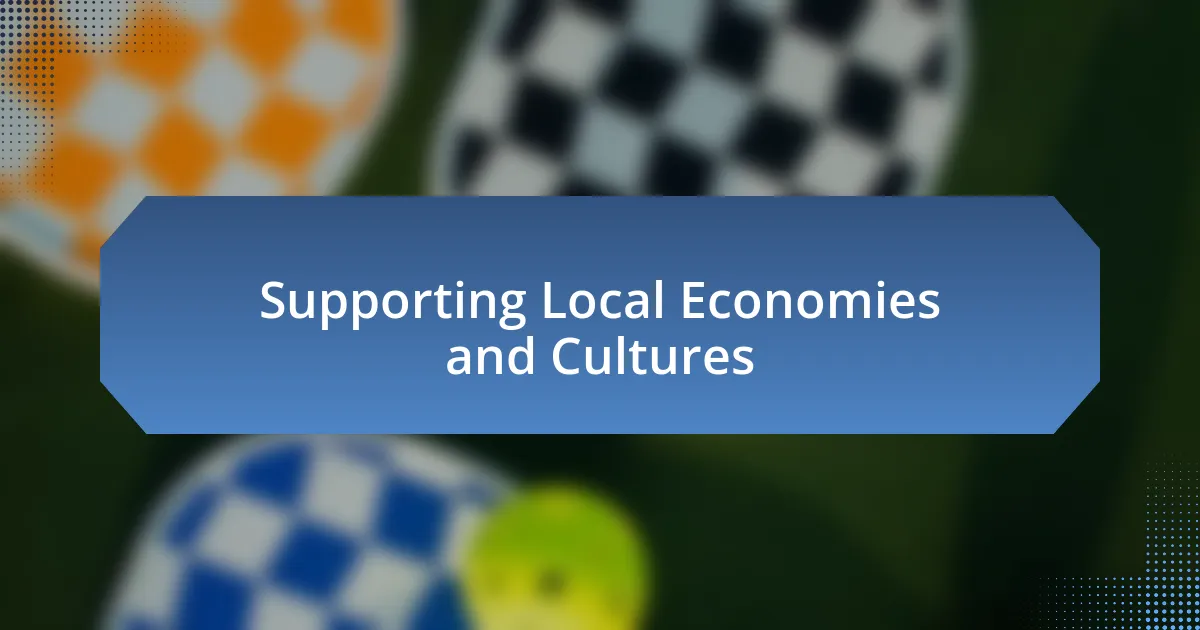
Minimizing Waste During Travel
When I pack for a trip, I always prioritize reusable items, like a sturdy water bottle and fabric shopping bags. One time, in a bustling city market, I realized how many single-use plastics were being discarded; it motivated me to carry my own containers for food and snacks. Have you ever thought about how small changes in our packing can significantly reduce our waste footprint?
During a hiking trip, I encountered a beautiful spot where plastic litter was sadly prevalent. It made me feel compelled not just to carry my trash but to collect any found along the trail, even if it didn’t belong to me. It struck me that each piece of trash I picked up was a chance to protect our environment—a reminder that anyone can make a difference. Have you ever been inspired to take action in the face of waste?
Another practice I’ve adopted is mindful eating when I travel. I remember visiting a local café where meals were served on real plates, not disposables. This simple choice resonated with me and underscored the importance of choosing establishments that prioritize sustainability. What impact do you think our dining choices can have on reducing waste during our travels?

Engaging in Responsible Wildlife Tourism
Engaging in responsible wildlife tourism demands a genuine commitment to both education and respect for the animals and their habitats. During a recent trip to a wildlife sanctuary, I learned the importance of choosing tours that prioritize animal welfare over profit. It was eye-opening to see the stark difference between facilities dedicated to conservation and those that exploited animals for entertainment. Have you ever thought about how the choices we make can affect the lives of these creatures?
I’ve been fortunate enough to witness animals in their natural environments, like observing elephants during a guided safari. What struck me most was the guide’s emphasis on keeping a safe distance and minimizing our impact on the ecosystem. I couldn’t help but appreciate the delicate balance of wildlife tourism when compared to the thrill of seeing these magnificent animals up close. How do we reconcile our desire for unforgettable experiences with the need to protect these habitats?
Choosing to participate in conservation efforts during my travels has deeply enriched my experiences. Volunteering at a sea turtle rehabilitation center allowed me to contribute directly to wildlife welfare and witness first-hand the impact of human actions on these amazing creatures. This experience left me feeling fulfilled and empowered; it made me realize that responsible tourism isn’t just about observing wildlife but also about actively protecting it. What if every traveler took a moment to think about how they could make a difference?
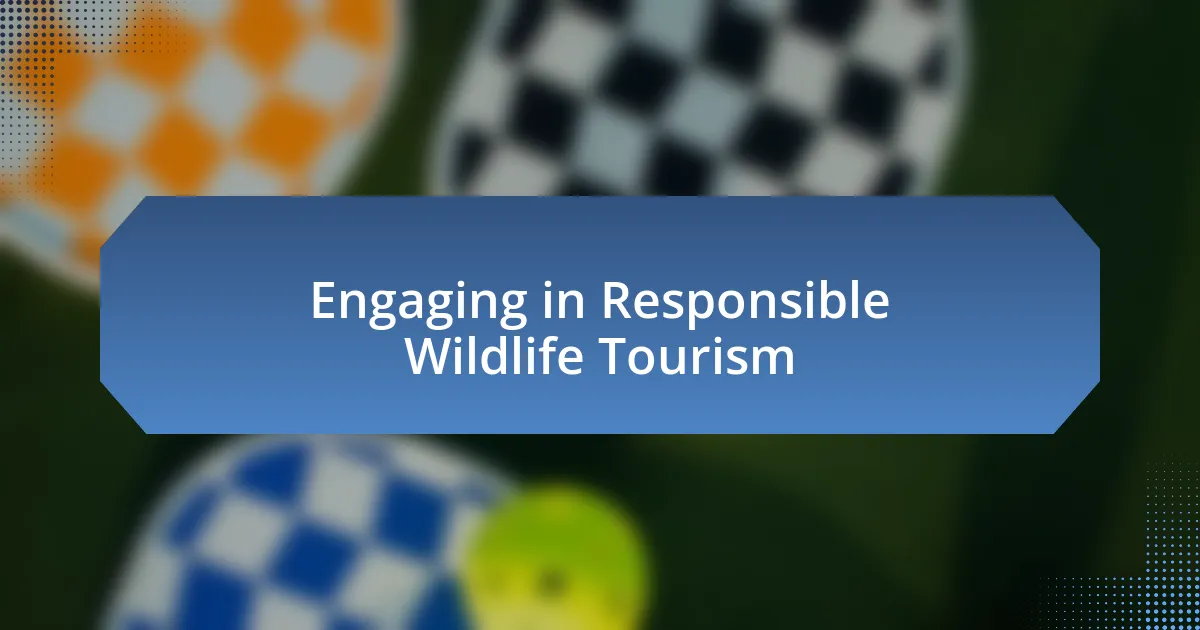
Sharing Experiences for Greater Impact
Sharing our travel experiences can create a ripple effect, encouraging others to adopt sustainable practices. I remember recounting my transformative trip to a local community in Costa Rica, where I participated in reforestation efforts. When I shared the pride and joy of planting trees with the villagers, my friends started to ask how they could engage in similar initiatives. Isn’t it fascinating how personal stories can inspire action?
Every time I share my journeys, I notice the power of storytelling in shaping perceptions about sustainable travel. After returning from a cultural exchange program, I was eager to express how the local artisans I met prioritized environmentally friendly methods in their crafts. The warm discussions that unfolded afterward made me realize that people want to connect, and hearing about authentic experiences fuels their desire to explore sustainable options. Have you found that storytelling impacts how your friends approach their own travel plans?
Reflecting on my adventures, I’ve seen firsthand the impact of sharing knowledge about sustainable practices. I conducted a small workshop at my local community center, showcasing tips on reducing waste while traveling. The engagement was heartwarming, and several participants opened up about their travel goals and concerns. In these moments, I understood that sharing experiences not only educates but fosters a sense of community among travelers striving for a positive impact. How do you think we can transform individual experiences into collective action for sustainability?
